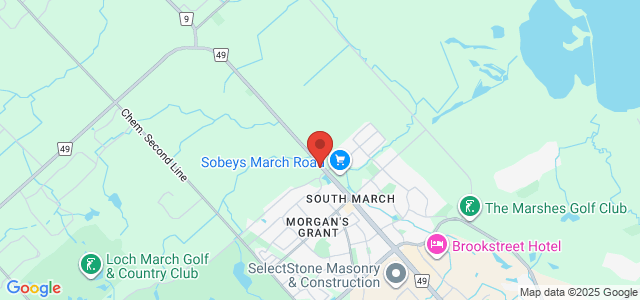Dr. James Lacey is a skilled surgeon who offers eyelid surgery to patients who have developed sagging, excess skin around their eyes with age. Eyelid surgery is performed through small incisions hidden in the natural contours of the skin surrounding your eyes. During this treatment, Dr. James Lacey carefully redrapes the skin around the eyes to give patients a more awake, youthful look. To learn more about eyelid surgery, contact Dr. James Lacey's Ottawa, Ontario, office today.
Candidates for Eyelid Surgery
Some people have eyelid surgery to correct problems that are a result of aging. Others have inherited traits or allergies which result in the development of bags under the eyes causing them to seek treatment in their 20′s or 30′s. If the upper eyelid condition is accompanied by sagging of the eyebrows, then a forehead lift may also be recommended while smoothing of crow’s feet may require chemical peeling, laser resurfacing or the use of BOTOX® Cosmetic. Circles beneath the eyes caused by dark pigmentation may be treated with a bleaching solution, chemical peel or alternatively intense pulse light therapy. Finally, sinking or depression around the bony orbit below the eye can be addressed with fat grafting or deep fat repositioning. For details of these ancillary procedures please refer to the Skin Care area of our site.
About an Eyelift
 High blood pressure, thyroid problems or diabetes are some of the conditions that can increase the risks of eyelid surgery. Dr. James Lacey will inquire whether or not you have any allergies and if so, how they affect your eyes. Specifically he needs to know if you have been told that you have a “dry eye” condition or any other eye problems.
High blood pressure, thyroid problems or diabetes are some of the conditions that can increase the risks of eyelid surgery. Dr. James Lacey will inquire whether or not you have any allergies and if so, how they affect your eyes. Specifically he needs to know if you have been told that you have a “dry eye” condition or any other eye problems.
In upper eyelid surgery, the incision is well hidden within the natural fold of the upper eyelid crease and it is through this incision that excess skin and fat can be removed.
Because the incision follows the natural contour of the upper eyelid, it will be well camouflaged when it is healed (Diagram A).
 In the case of lower eyelid surgery, Dr. James Lacey will discuss two different approaches: one which utilizes an external approach and the other using an incision from inside the lower lid margin. Your age, overlying skin condition, degree of lid laxity and the extent of the fatty deposits will determine which approach is recommended.
In the case of lower eyelid surgery, Dr. James Lacey will discuss two different approaches: one which utilizes an external approach and the other using an incision from inside the lower lid margin. Your age, overlying skin condition, degree of lid laxity and the extent of the fatty deposits will determine which approach is recommended.
The external approach incision is usually well hidden below the lower lashes. Through this incision, excess skin, muscle and fat are removed (Diagram B). Fat may also be redistributed or sutured in a new location to help eliminate or reduce the puffiness or bulges. Other adjustments such as lid tightening (canthopexy) may be performed to help correct special problems such as muscle laxity.
 It may be decided that the best procedure for removing excess fat is a technique that uses an internal incision which is referred to as a transconjunctival approach (Diagram C).
It may be decided that the best procedure for removing excess fat is a technique that uses an internal incision which is referred to as a transconjunctival approach (Diagram C).
While it is a good choice for younger patients, it cannot be used to remove excess skin. Quite often CO2 laser resurfacing is recommended in conjunction with transconjunctival surgery which assists in tightening the skin under the eyes.
After Your Surgery
After your surgery, you may have a feeling of dryness or irritation in the eyes which may require medical treatment. There is also a chance of a temporary reduction in eyelid sensation or impaired eyelid function.
Mild swelling persists for several weeks in some cases while more commonly the majority of swelling resolves in just seven days. Bruising normally disappears in seven to ten days and you may use makeup within the first week to hide residual discoloration.
You may find your eyes are temporarily sensitive to light. Dr. James Lacey may recommend eye drops to relieve temporary burning or itching sensations and you may want to wear dark sunglasses for a couple of weeks to protect your eyes from the wind and sun.
The incision lines will fade over several months until they become barely visible. Although eyelid surgery (eyelift or blepharoplasty) has infrequent complications, the associated risks, limitations and expectations will be thoroughly reviewed with you prior to proceeding with surgery.
Contact Us
If you would like to speak with Dr. James Lacey you can request a consultation by contacting us.

